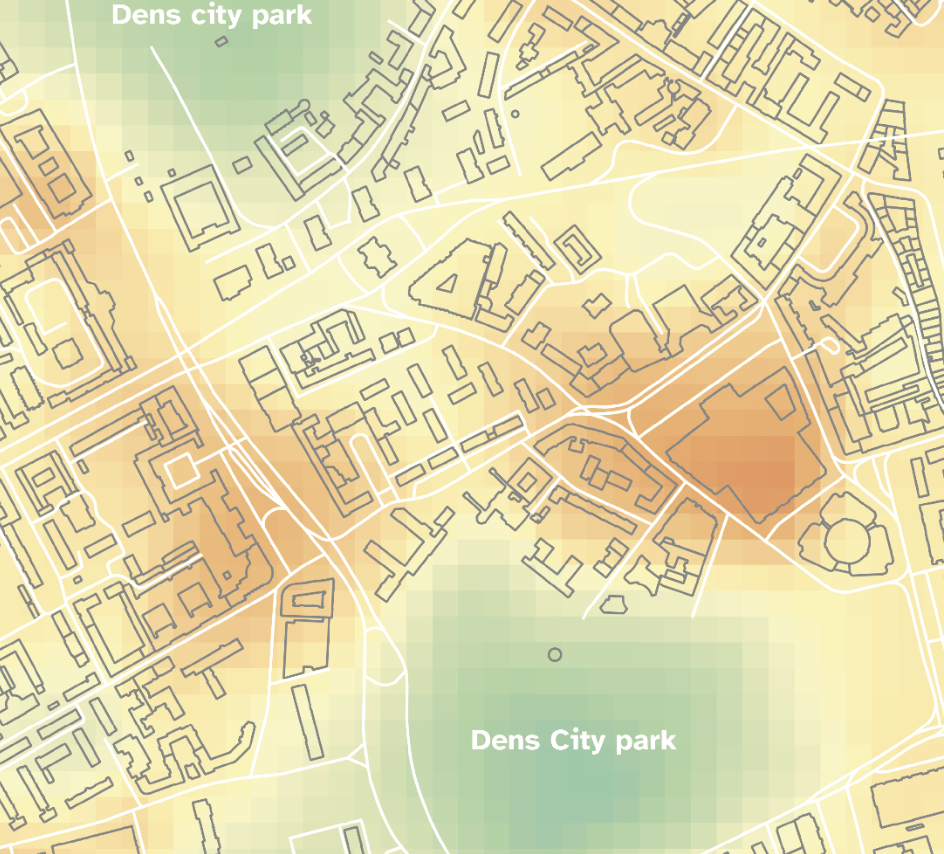Save on cloud costs with Spots
Users can now save on cloud resources costs as they gain access to CloudFerro cloud instances at significantly reduced prices compared to standard VMs.


The density of buildings and urban infrastructure causes changes in the microclimate of urban areas. This has a direct impact on the health and quality of life of the inhabitants. The solution may be Copernicus satellite data, which will allow for a better understanding of spatial phenomena occurring in densely populated places.

What is urban heat island phenomenon and how does it affect cities
Heatwaves boosted by urban heat island phenomenon are the most dangerous weather extremes, which not only damage our health, but also lead to the increase of energy consumption. To reduce or prevent their detrimental effects we need to track urban climate. Urban surface heat island (USHI) is an obvious consequence of urban processes and it is associated with the increase of temperature of urbanized areas in relation to undeveloped rural areas.

The phenomenon results from city morphology* and it is influenced by many factors. Even a single building can increase the ambient temperature. The accumulation of concrete buildings and urban infrastructure causes the temperature in the city to rise from 2 to even 8ºC, and in extreme cases, even above 12ºC. The strongest temperature amplitudes are observed on summer nights.
Urban Heat Island affects human health and energy consumption and that's why the issue of the urban heat island is extremely important in the management and planning of a space comfortable for residents to live.
The most important factors contributing to the urban heat island phenomenon are:
* City morphology - structure of the inner and outer urban space and the origin of its parts. The spatial conditions of the city influence the scale of the urban heat island phenomenon. The amount of heat accumulated is determined by factors such as the city's environmental context, the number of inhabitants, the amount of greenery, the height of buildings, width of streets, the predominant color of the surface (albedo), the presence of ventilation corridors or even the roughness of materials used in the city.
The most dangerous weather extreme
Heatwaves are the most dangerous weather extremes that cause more casualties than hurricanes and floods combined. On the average, 1,500 American city dwellers die each year because of the heat, which is many more deaths than those caused by all other natural disasters combined. The compounding effect of heatwaves and UHI could prove to be even deadlier to urban populations, and are extremely dangerous especially for people who suffer from chronic diseases (such as asthma, heart condition), elderly people, manual workers, children and athletes.
Threats to cities caused by the urban heat island phenomenon:
The CREODIAS platform allows users to search and download satellite scenes of the Sentinel, Landsat and MODIS programmes at no cost (repository of ready-to-use 30 PB of current and archive Earth observation data) which allows you to analyse the data in order to find the areas that are most endangered by heat waves and the urban heat island phenomenon.
Cloud workflow with EO data repository allows researchers to automate processes and calculate large amounts of data and changes over time. These operations combined with data repository are crucial in identifying critical areas for the microclimatic functioning of cities. Analysts can find spatial patterns to better understand the phenomena occurring in urban space, and consequently help local governments to take necessary steps to improve the quality of life of the residents. As we can see, spatial analyses are crucial for a better understanding of the urban climate.
The best solution - urban green areas
The easiest and most effective way to cool down urban climate is to introduce urban green areas. Vegetation contributes to the formation of shade, reflects solar radiation, and thanks to evapotranspiration processes, it effectively reduces the temperature in cities. Urban vegetation also contributes to the reduction of air and water pollution, reduces noise and accumulates large amounts of water, creating opportunities to reduce energy consumption.
Copernicus data can be applied to analyse urban climate and improve urban greenery in the most neglected areas by new investments in green infrastructure, for instance:

The extensive usage of EO data provides faster and more sustainable economic growth through better use of resources. This is key to achieving sustainable development goals driven by space innovations.
Should you have any questions, please contact us at communication@cloudferro.com